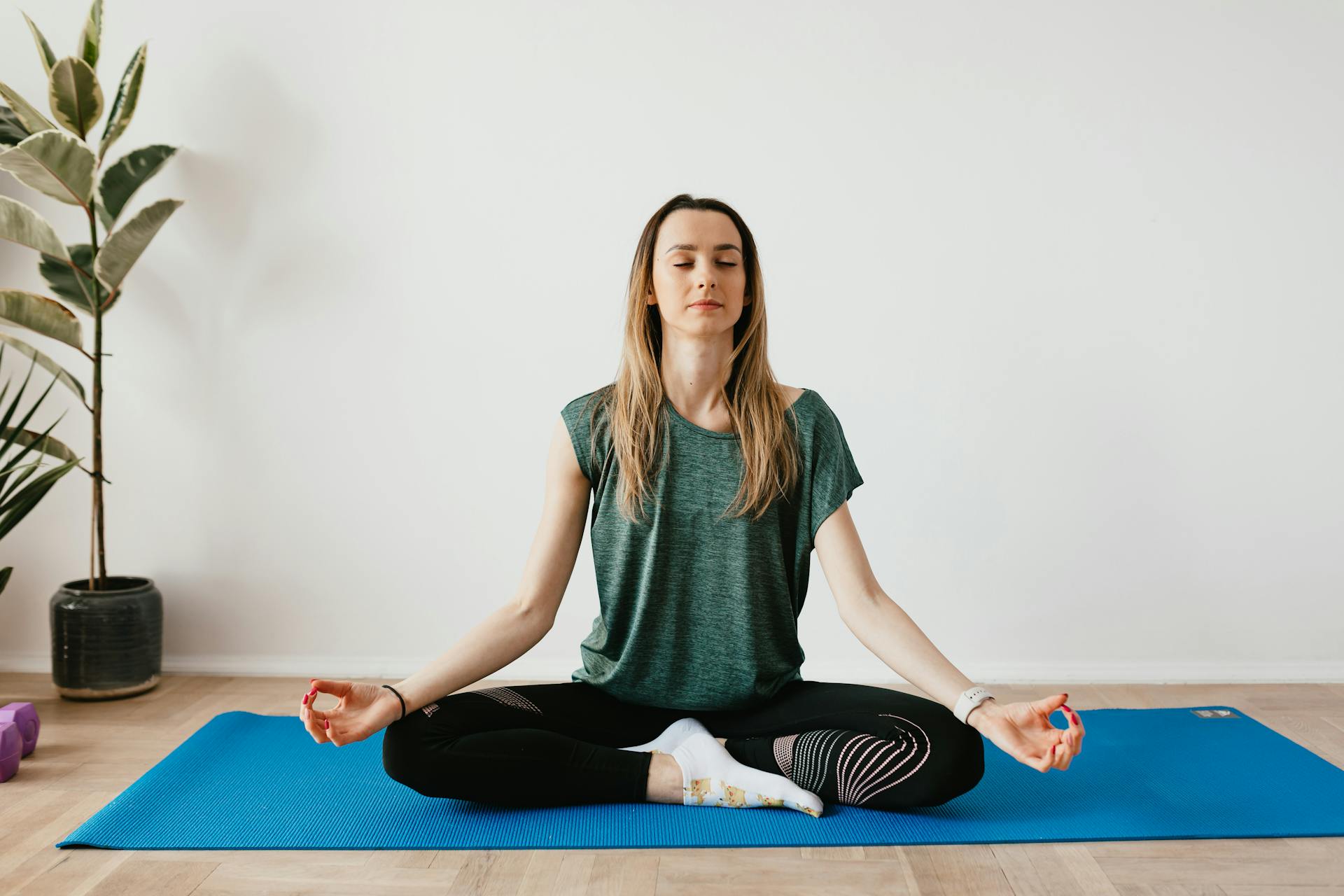

In our ongoing quest for greater productivity, we often overlook one of the most powerful and accessible tools we have: our breath.
Breathing is an automatic process, yet we can unlock a range of benefits by consciously controlling it. Deep breathing, in particular, is a real powerhouse. Breathing slowly and deeply triggers a series of positive effects in your body, such as;
- Stress and pain management. Assists in reducing tension and discomfort.
- Mood enhancement. Reduces depression and anxiety symptoms.
- Blood pressure regulation. Maintains a healthy blood pressure level.
- Oxygenation. Improves the supply of oxygen to vital organs.
- Calm and relaxation. It relaxes the nervous system and promotes a sense of peace.
Here, we’ll examine how breathing exercises can boost productivity and how to incorporate them into your daily routine.
Breathe to Achieve: The Power of Breath for Productivity
Stress, a common culprit in today’s hectic world, can hinder our ability to think clearly and perform at our best. In fact, according to an American Psychological Association survey from 2023, 77% of workers reported having experienced work-related stress in the past month. As a result of this high level of stress, many workers have accepted it as the norm.
Whenever we are faced with a stressful situation, our bodies go into overdrive. It’s like when your smoke alarm goes off while cooking dinner. Whenever we are in distress, our brains send a distress signal, triggering a series of events. Our hearts beat faster, our breathing quickens, and our muscles tense up. We do this to prepare our bodies to fight or flee dangerous situations.
Our bodies cannot always distinguish between an ancestral threat, such as a saber-tooth tiger, and a modern stressor, such as a tight deadline, an off-hours email, or a toxic workplace. In other words, ordinary challenges can elicit similar physical responses. This constant state of alert may lead to difficulty managing emotions, making decisions, and thinking clearly.
To overcome this stress response, we need to breathe. Breathing patterns correlate directly with emotional states. Ultimately, how we breathe affects how we think, feel, and react.
Furthermore, Dr. Dallin Tavoian, an exercise physiology scientist at the University of Arizona, says DBE is simple, time-efficient, and does not require specialized equipment, making it suitable for diverse settings. The workplace is a perfect place to implement DBE for a few reasons. These include long workdays, sedentary work habits, work-related stress, and regular breaks to reduce worker errors.
Essentially, we can reset our bodies and minds through our breath. This technique can be beneficial for both individuals and teams in stressful situations, such as meetings or presentations.
Breathing Exercises to Boost Your Productivity
The following techniques can be used throughout the day to improve your breathing.
Box Breathing
A simple but powerful way to relax is box breathing. Originally based on the ancient yogic practice of pranayama, or breath control, it’s also popular among United States Navy SEALs.
The term “box breathing” comes from visualizing a box with four sides. As you inhale for a count of four, hold for four, exhale for four, and then hold again for four, each side represents a phase of your breath. This rhythmic pattern can bring balance and tranquility to your body and mind.
The box breathing technique is as follows:
- Breathe out completely, releasing all the air you can from your lungs.
- Slowly inhale through your nose while counting to four. Feel your lungs and belly expand as you do this.
- Count to four while holding your breath.
- Count to four as you exhale slowly.
- Hold your breath for four more counts.
- It is recommended that you repeat this cycle three or four times.
Box breathing can be practiced anywhere, regardless of where you are, whether at work, at a café, or in a traffic jam. It can help you re-center yourself, improve your concentration, and calm your body and mind in stressful situations. Practiced for longer periods, box breathing is also said to build resilience to stress, reduce depression, and give you a more positive outlook.
If four seconds seems excessive or insufficient, you can adjust the count for each step. Visualizing a box as you count, with each count representing one side, may also help.
4-7-8 Breathing
Another powerful method for reducing stress and improving concentration is the 4-7-8 breathing technique, popularized by Dr. Andrew Weil. It is especially useful for calming the mind and preparing for deep, focused concentration.
To practice 4-7-8 breathing, follow these steps:
- Find a comfortable position. Ensure your posture is good, whether you’re sitting or lying down. Lying down is best when it comes to falling asleep.
- Get ready. Put the tip of your tongue behind your upper teeth on the roof of your mouth. Throughout the exercise, keep it there. Try pursing your lips to help you exhale.
- Breathe in a 4-7-8 rhythm:
- Make a whooshing sound while exhaling completely.
- Take a deep breath through your nose for four counts while closing your mouth.
- Count to seven while holding your breath.
- Exhale forcefully through your mouth for eight counts, making a whooshing sound.
You’ll want to repeat this cycle four times. Most importantly, though, hold your breath for seven seconds. You can gradually increase the number of cycles to eight as you become more comfortable.
Breathing techniques such as 4-7-8 are forms of pranayama, ancient yogic breathing practices. This is meant to activate the parasympathetic nervous system, which relaxes us.
Alternate Nostril Breathing (Nadi Shodhana)
Nadi shodhana, or alternate nostril breathing, is a yoga practice that involves breathing in and out through each nostril in a specific pattern. The name comes from the Sanskrit words nadi, which means “channel,” and shodhana, which means “cleansing” or “purifying.”
In yoga, it’s believed that practicing nadi shodhana can cleanse the nadis, which are said to allow for a smoother flow of “prana,” or life force energy, throughout the body.
Here are some steps for practicing nadi shodhana:
- Sit in a comfortable position with your spine straight and shoulders relaxed. You can cross your legs and place your left hand on your left knee.
- Bring your right hand up to your nose, and move your index and middle fingers out of the way.
- Close your eyes.
- Using your thumb, close your right nostril.
- Exhale slowly and completely through your left nostril.
- Release your right nostril, and place your ring finger on your left nostril.
- Inhale slowly and deeply through your right nostril.
- Exhale through your right nostril.
- Repeat the cycle, breathing in through your left nostril and out through your right.
- Continue for up to 5 minutes, and finish by exhaling through your left side.
Some say that nadi shodhana can help with stress, anxiety, and respiratory irritants and can also improve mental clarity and concentration. You can try matching the length of your inhales, pauses, and exhales and slowly increase your count as you get better with the practice.
Belly Breathing (Diaphragmatic Breathing)
By taking slow, deep breaths, diaphragmatic breathing, also known as belly breathing or deep breathing, relaxes the body by using the diaphragm, which separates the chest from the abdomen. As you inhale, you should expand your abdomen rather than your chest.
The best way to practice belly breathing is to:
In addition to improving lung function, diaphragmatic breathing is an easy yet effective technique for relaxation. To get started, follow these steps:
- Find a comfortable position. Lie down on a flat surface with your knees and head supported by a pillow.
- Place your hands. Take both hands and place one above your chest and one below your rib cage on your stomach.
- Inhale slowly. As you breathe in through your nose, allow your stomach to expand outward. As you raise your stomach hand, the one on your chest should remain still.
- Exhale gently. When you exhale through pursed lips, tighten your abdominal muscles and gently push your stomach inward. It is also important to keep your chest relatively motionless.
- Practice regularly. Practice diaphragmatic breathing for five to ten minutes three to four times a day.
As you gain more comfort, you can practice sitting or standing. Keep your shoulders, head, and neck relaxed when you are in these positions.
Ganana
In Buddhist meditation, Ganana, which means “counting,” involves counting breaths to focus mental attention on breathing. It’s one of six stages of anapanasati, also called mindful breathing meditation:
- Anugama. Watching the movement of air in and out of the body.
- Sthana or sthapana. Bringing the body to a state of stillness.
- Upaalakshana. Observing the air’s elements.
- Vivarthana. Focusing on the air transforms the mind.
- Parisuddhi. Vision entering the path.
During the ganana stage, practitioners count breaths from one to ten without making any mistakes. Next, they move on to anugama, focusing on inhalation moving through their body and then exhalation leaving it. After that, they move on to sthapana, which focuses on a specific body part.
The Japanese Zen tradition refers to ganana as Susoku-Kan, which means “number breath viewing”.
Incorporating Breathing Exercises into Your Routine
The following exercises can help you maximize the benefits of these exercises:
- Start your day with a mindful breathing session. Spend a few minutes each morning focusing on your breath.
- Take short breaks throughout the day. Whenever you feel stressed or overwhelmed, practice breathing exercises for a few minutes.
- Use breathing as a transition tool. To center yourself, take a few deep breaths before beginning a new task or meeting.
- Practice mindfulness meditation. Often, mindfulness meditation incorporates breath awareness.
It’s not just about working longer or harder; it’s also about working smarter. Utilizing your breath can enhance your mental and physical health, allowing you to perform at your best.
FAQs
What are the benefits of breathing exercises for productivity?
As a result of breathing exercises, productivity can be significantly enhanced in the following ways:
- Reducing stress and anxiety. Stress is a major productivity killer. Breathing deeply can calm your mind and body and improve your focus.
- Increasing oxygen intake. When you breathe correctly, you ensure that your brain receives adequate oxygen, which leads to improved cognitive function.
- Enhancing focus and concentration. Practicing breathing exercises regularly will help you be more attentive and able to concentrate better at work.
- Boosting energy levels. By reducing fatigue and improving circulation, deep breathing can increase energy levels.
How often should I do breathing exercises?
Breathing exercises should be incorporated into your daily routine for optimal results. In just five to ten minutes, you can make a difference. Practice the following:
- In the morning, practice breathing exercises to relieve stress and start the day positively.
- When you take a break, refresh your mind.
- Before challenging tasks, improve your focus.
- To reduce stress and wind down in the evening.
How long does it take to see results?
It takes different people different amounts of time to notice improvements. Despite this, many people report feeling calmer and more focused after just a few sessions. The key to reaping the full benefits is consistent practice.
Can breathing exercises help with procrastination?
Yes, absolutely!
Breathing exercises reduce stress and improve focus, which can help you overcome procrastination. Take a few minutes to breathe deeply to center yourself and feel less overwhelmed.
Can I do breathing exercises while working?
Without a doubt!
You can incorporate short breathing exercises into your workday. For example, take a few deep breaths during a short break or before a challenging task.
Image Credit: Karolina Kaboompics; Pexels











Angela Ruth
My name is Angela Ruth. I aim to help you learn how Calendar can help you manage your time, boost your productivity, and spend your days working on things that matter, both personally and professionally. Here's to improving all your calendars and becoming the person you are destined to become!